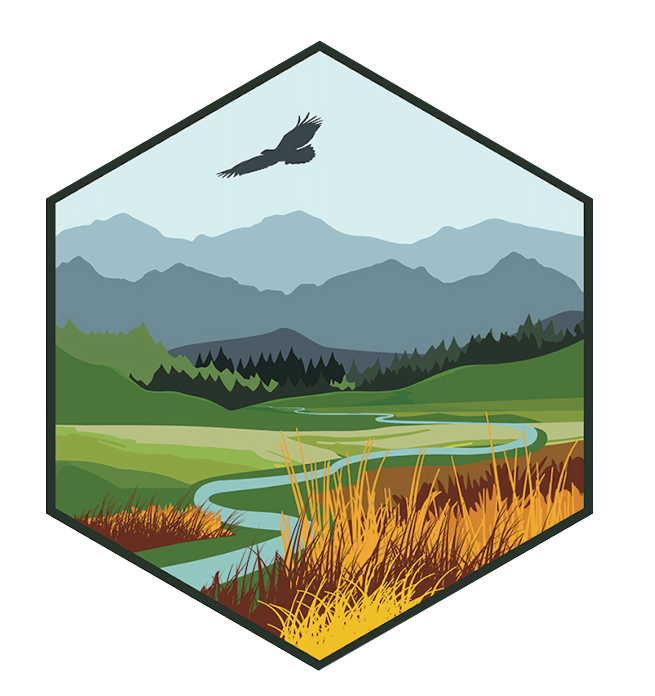The NC CSC has collaborated with the USGS AmericaView program to deploy cameras that will record phenology throughout the region. Although, not all cameras were deployed throught AmericaView, they were deployed at the following sites: Ashland Bottoms, Kansas Bangtail Study Area in Bozeman, Montana Central Plains Experimental Range, Colorado Grand River Grasslands, Iowa Grand Teton National Park National Elk Refuge, Wyoming Nine Mile Prairie, University of Nebraska, Nebraska Oakville Prairie, North Dakota Poudre Learning Center, Colorado Sagebrush Steppe, Wyoming Earth Resources Observation and Science Center, South Dakota
In addition to the major projects funded by the North Central Climate Science Center (NC CSC), selected through its solicitation process or the directed funds going to the foundational Science Areas, there remains a need within the north central domain to support work that builds capacity among stakeholders that have been otherwise left out of the major projects funded by the NC CSC. During the course of this project, we focused on stakeholder capacity building by providing regional offerings of climate-related courses for resource managers, supporting tribal college students and deploying technology to better understand how climate impacts living things, and supporting strategic scientific study of the climate/energy/environment nexus in the Missouri River Basin. First, the NC CSC provided climate education opportunities in collaboration with the US Fish and Wildlife Service National Conservation Training Center (NCTC). We offered the NCTC Climate Change Vulnerability Assessment class to managers and students from April 22 - 24, 2014 in Jackson, WY, and from September 30 - October 2, 2014 in La Crosse, WI. Future courses will include Climate Smart Conservation. The NC CSC has also worked with the Indigenous Peoples Climate Change working group to establish an Indigenous Geography Phenology Network by providing support to tribal college students to collect observations of plant and animal life-cycle stages (known as phenology) for culturally significant plants and animals, and uploading these observations to a citizen-science database ( USANPN). In addition, the NC CSC has collaborated with the USGS AmericaView program to deploy cameras that will record phenology throughout the region. Finally, we supported the Intertribal Council On Utility Policy (ICOUP) to formulate a strategic scientific study to understand and demonstrate how climate science can be integrated into resource management decisions, particularly with regard to the climate/energy/environment nexus in the Missouri River Basin.
"Motivation": The motivation for this briefing is to examine the large inhomogeneity (step shift) in the observed temperature record at the SNOw TELemetry (SNOTEL) stations in the Intermountain West—Colorado, Utah and Wyoming—and its implications for climate, hydrology and ecological research in the region. This issue impacts the entire SNOTEL network across the 11 Western states, as demonstrated by Jared Oyler of the University of Montana and his colleagues in Oyler et al. (2015). Here we build on that work by performing finer-grained analyses, and identifying the implications for climate studies that have incorporated SNOTEL temperature data. In doing so, we intend to promote a broader awareness of this issue among the climate impacts assessment community.
Abstract (from http://www.aimspress.com/article/10.3934/environsci.2015.2.400): State-and-transition simulation models (STSMs) are known for their ability to explore the combined effects of multiple disturbances, ecological dynamics, and management actions on vegetation. However, integrating the additional impacts of climate change into STSMs remains a challenge. We address this challenge by combining an STSM with species distribution modeling (SDM). SDMs estimate the probability of occurrence of a given species based on observed presence and absence locations as well as environmental and climatic covariates. Thus, in order to account for changes in habitat suitability due to climate change, we used SDM to generate continuous surfaces of species occurrence probabilities. These data were imported into ST-Sim, an STSM platform, where they dictated the probability of each cell transitioning between alternate potential vegetation types at each time step. The STSM was parameterized to capture additional processes of vegetation growth and disturbance that are relevant to a keystone species in the Greater Yellowstone Ecosystem—whitebark pine ( Pinus albicaulis). We compared historical model runs against historical observations of whitebark pine and a key disturbance agent (mountain pine beetle, Dendroctonus ponderosae), and then projected the simulation into the future. Using this combination of correlative and stochastic simulation models, we were able to reproduce historical observations and identify key data gaps. Results indicated that SDMs and STSMs are complementary tools, and combining them is an effective way to account for the anticipated impacts of climate change, biotic interactions, and disturbances, while also allowing for the exploration of management options.
Abstract (from http://www.sciencedirect.com/science/article/pii/S1574954115001466): Anticipating the ecological effects of climate change to inform natural resource climate adaptation planning represents one of the primary challenges of contemporary conservation science. Species distribution models have become a widely used tool to generate first-pass estimates of climate change impacts to species probabilities of occurrence. There are a number of technical challenges to constructing species distribution models that can be alleviated by the use of scientific workflow software. These challenges include data integration, visualization of modeled predictor–response relationships, and ensuring that models are reproducible and transferable in an adaptive natural resource management framework. We used freely available software called VisTrails Software for Assisted Habitat Modeling ( VisTrails:SAHM) along with a novel ecohydrological predictor dataset and the latest Coupled Model Intercomparison Project 5 future climate projections to construct species distribution models for eight forest and shrub species in the Greater Yellowstone Ecosystem in the Northern Rocky Mountains USA. The species considered included multiple species of sagebrush and juniper, Pinus flexilis, Pinus contorta, Pseudotsuga menziesii, Populus tremuloides, Abies lasciocarpa, Picea engelmannii, and Pinus albicaulis. Current and future species probabilities of occurrence were mapped in a GIS by land ownership category to assess the feasibility of undertaking present and future management action. Results suggested that decreasing spring snowpack and increasing late-season soil moisture deficit will lead to deteriorating habitat area for mountain forest species and expansion of habitat area for sagebrush and juniper communities. Results were consistent across nine global climate models and two representative concentration pathway scenarios. For most forest species their projected future distributions moved up in elevation from general federal to federally restricted lands where active management is currently prohibited by agency policy. Though not yet fully mature, custom scientific workflow software shows considerable promise to ease many of the technical challenges inherent in modeling the potential ecological impacts of climate change to support climate adaptation planning.
Abstract (from http://www.islandpress.org/book/climate-change-in-wildlands): Scientists have been warning for years that human activity is heating up the planet and climate change is under way. In the past century, global temperatures have risen an average of 1.3 degrees Fahrenheit, a trend that is expected to only accelerate. But public sentiment has taken a long time to catch up, and we are only just beginning to acknowledge the serious effects this will have on all life on Earth. The federal government is crafting broad-scale strategies to protect wildland ecosystems from the worst effects of climate change. The challenge now is to get the latest science into the hands of resource managers entrusted with protecting water, plants, fish and wildlife, tribal lands, and cultural heritage sites in wildlands. Teaming with NASA and the Department of the Interior, ecologist Andrew Hansen, along with his team of scientists and managers, set out to understand how climate and land use changes affect montane landscapes of the Rockies and the Appalachians, and how these findings can be applied to wildlands elsewhere. They examine changes over the past century as well as expected future change, assess the vulnerability of species and ecosystems to these changes, and provide new, collaborative management approaches to mitigate expected impacts. A series of case studies showcases how managers might tackle such wide-ranging problems as the effects of warming streams on cold-water fish in Great Smoky Mountain National Park and dying white-bark pine stands in the Greater Yellowstone area. A surprising finding is that species and ecosystems vary dramatically in vulnerability to climate change. While many will suffer severe effects, others may actually benefit from projected changes. Climate Change in Wildlands is a collaboration between scientists and managers, providing a science-derived framework and common-sense approaches for keeping parks and protected areas healthy on a rapidly changing planet. - See more at: http://www.islandpress.org/book/climate-change-in-wildlands#sthash.ZdEUAf26.dpuf
There is growing evidence that the rate of warming is amplified with elevation, such that high-mountain environments experience more rapid changes in temperature than environments at lower elevations. Elevation-dependent warming (EDW) can accelerate the rate of change in mountain ecosystems, cryospheric systems, hydrological regimes and biodiversity. Here we review important mechanisms that contribute towards EDW: snow albedo and surface-based feedbacks; water vapour changes and latent heat release; surface water vapour and radiative flux changes; surface heat loss and temperature change; and aerosols. All lead to enhanced warming with elevation (or at a critical elevation), and it is believed that combinations of these mechanisms may account for contrasting regional patterns of EDW. We discuss future needs to increase knowledge of mountain temperature trends and their controlling mechanisms through improved observations, satellite-based remote sensing and model simulations.
This 2-pager describes the Evaporative Demand Drought Index (EDDI), which is a drought index that can serve as an indicator of both rapidly evolving “flash” droughts (developing over a few weeks) and sustained droughts (developing over months but lasting up to years).
This data set contains output from the dynamic vegetation model MC1, as modified to simulate future woody encroachment in the northern Great Plains. Simulations were done for the historical period (1895-2005) and the future period (2006-2100). Separate simulations were done for eastern and western portions of the region, with the eastern simulations using model parameters appropriate for Juniperus virginiana as the major evergreen needle-leaf life form, and the western simulations using model parameters appropriate for Pinus ponderosa as the major evergreen needle-leaf life form. Simulations in each portion were run for two A2 emissions scenario climate projections (CSIRO, representing moderate temperature increases and wetter conditions, and MIROC, representing very hot and dry conditions) crossed with 8 (eastern portion) or 6 (western portion) fire x grazing x tree regeneration capacity (eastern only) scenarios. Output variables provided on a yearly basis are potential evapotranspiration, live aboveground tree carbon and aboveground grass net primary production. Output variables provided as decadal averages are live aboveground tree carbon, tree leaf area index, soil available water for plant survival, surface runoff, potential evapotranspiration, streamflow, and actual evapotranspiration. Child records contain command files for running the model, model parameters, model input, and output from model runs for the equilibrium and spinup stages of model runs (precursors to running historical and future simulations).

